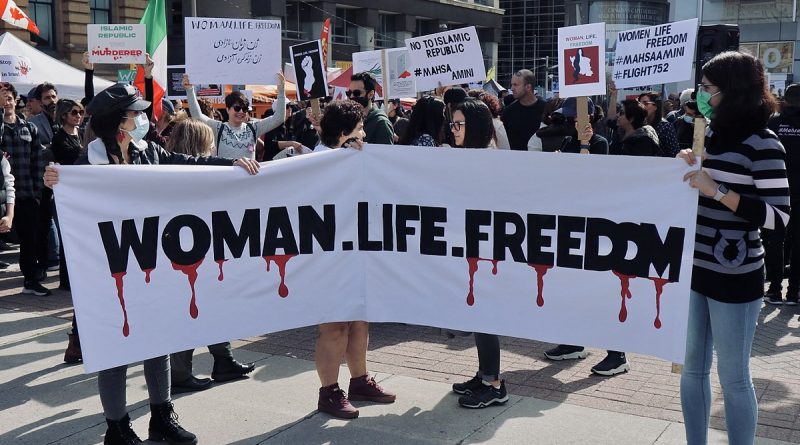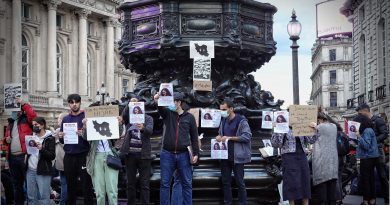Iranian Protests Escalate Despite Government Crackdown
Christian Montanez
Staff Writer
On September 13 in the streets of the Iranian capital of Tehran, Masha Amini, a young Iranian woman, was detained by the Gasht-e-Ershad, otherwise known as the Iranian Morality Police, due to wearing an “improper hijab,” reports TIME. The Morality Police is tasked with enforcing traditional Sharia Law, specifically on proper Islamic dress, which for women includes hijabs, or headscarves. After being arrested, Amini was pronounced dead on September 16, three days after being put in government custody.
According to The New York Times, Iranian security forces allege that Amini died of a heart attack in the detention center. There have been videos and pictures in social media circulating of Amini in the hospital the day before she died, however, with bruises and blood oozing from her ear. Unfortunately, Amini’s death in Iranian custody is not unique as many dissidents have been known to die in government custody. The New York Times reports that in 2003, a woman named Zahra Kazemi, was arrested and died from blows to the head while in the custody of Iranian security forces, a circumstance extremely similar to Amini but before the existence of social media. Combine Ms. Amini’s death with previous treatment like that of Kazemi, and the Iranian people appear to have had enough. Since Amini’s passing, protests have erupted throughout Iran and continue two months later.
Iranians outraged over Amini’s death and have taken to the streets to show their dissatisfaction with government policies, especially those deemed to be repressive towards women. TIME reports that throughout nearly 80 cities, especially Tehran, women and young people are out in the streets, burning hijabs and chanting anti-government slogans to display solidarity with Amini, at great risk to themselves. In what has become one of the largest protests against the Islamic Republic since its inception in 1979, many are hopeful that the results of these protests will lead to substantive reforms, reports AP. Their spontaneity and ferocity is reason enough to believe that perhaps this time the protests will be able to make an impact not only for women’s rights, but rights for Iranians in general.
As these protests continue to break out across Iran, the Iranian government is intent on restoring stability. Initially, Iranian security forces only used tear gas, riot police, and batons; however, they have since begun to use metal pellets, and even lethal force, reports TIME. According to the Office of the High Commissioner for Human Rights, over 300 civilians, including 40 children, have been killed since September 16 as the government cracks down on the unrest. Even more concerning, the OHCHR and many human rights groups have called on Tehran to end its reported human rights violations.
Besides lethal force, Iranian security forces have also increased arrests, raided schools, and have limited Internet access to citizens across the country. According to The New York Times, about 14,000 people have been arrested, as the protests hit the two month mark. Iran is very clearly violating freedom of expression and the right to protest, which will only further galvanize not only Iranians but the international community as well. Unlike in previous protests, the government’s harsh response has not had the intended effect of stamping out the protests and the movement continues to gain momentum. Iranian security forces have met protestors at universities, have raided high schools, and detained anywhere from 500-1000 minors, according to Al Jazeera. The presence of police forces is so heavy that parents are afraid of sending their children to school for fear of being arrested or appearing to join the protestors. The government’s response has also included stricter internet censorship, in an attempt to cripple communications between activists and hinder mobilization efforts.
Overall, the Iranian people and their protests are still going strong despite the overwhelming presence of Iranian security forces and societal restrictions. Clearly, women’s rights and freedom at large are important to the Iranian people, who seem very determined to achieve their goals. Even with the beginning of state issued executions, according to Al Jazeera, Iranian citizens stay steadfast in their mission to lessen the grip of their authoritarian government. The appearance is that no matter the cost, the Iranian people will not go silently into the night.
Image Courtesy of Taymaz Valley


